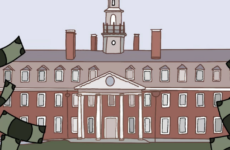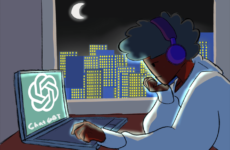Ryan Murphy’s new Netflix mini-series, “Hollywood,” has not been heralded by critics — as publications like Slate and The Verge have argued, the show is far from perfect. There are plot holes, some characters have little narrative drive, and acts of hate and violence are immediately forgotten. It’s easy to say that “Hollywood” is not an expertly written piece of art. What it is, however, is a dream: the show envisions a world wherein marginalized people succeed even as the world roots against them.
“Hollywood” reimagines Hollywood in the late 1940s. It creates a fantasy wherein people of color, people identifying as LGBTQ+, and women can thrive in ways that are still not fully realized. Just five years ago, a #Oscarssowhite campaign tried to combat the lack of representation and nominations of people of color at award shows. This sentiment is echoed in “Hollywood” when the first non-white person to win an Oscar in any category, Hattie McDaniel, tells the story of being blocked from entering the very building in which she was set to win an award. The magic of “Hollywood” comes from its departures from reality in which the protagonists – gay men and black women – are able to succeed. It is a fantasy of equality and art that roots itself in the dreams of those who are underrepresented and unable to get through the doors of the entertainment industry.
“Hollywood” features a diverse cast whose characters find themselves at the fictional Ace Studios making a movie called Meg. The characters assume that their film is guaranteed to flop and incite riots because of its controversial cast. After all, the main players include a gay African-American screenwriter named Archie, a talented African-American actress named Camille Washington, a half-Filipino director Raymond Ainsley who is forced to mask his ethnicity to get ahead, and a ridiculed female Jewish studio head, Avis Amberg.
Meg tells the story of a young African-American woman who, against all odds, makes it in Hollywood. The movie within the show tells African-Americans, women, LGBTQ+ people, and other minorities: yes, you can succeed. Meg says, “Thank you … for making sure that no little girl staring up at that screen will ever again be told that there are limits to what they can achieve.”
We have yet to reach a time when creators of all identities are recognized for their creativity in Hollywood, and the show is well aware of that fact. The fictional creation and distribution of Meg did not end hate or inequality. Even within the show, the movie, written by a gay man, starring a woman of color, directed by a half-Asian person, and helmed by a Jewish female studio head, is met with violent and racist protests — echoes and recurrences of which are not unfamiliar today. Nevertheless, Meg is a groundbreaking fantasy, for it wins despite hate and inequality.
“Hollywood” and its portrayal of triumph for people who, historically, have struggled to achieve recognition or opportunities, is today’s dream. It is a success story that helps us imagine a world wherein all people of all identities have equal opportunity to be recognized for their creative contributions.




